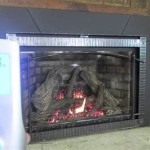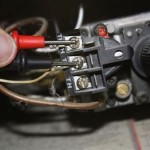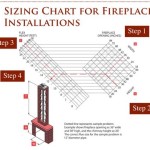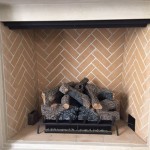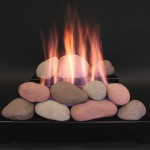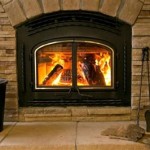Linear Gas Fireplace Reviews: A Comprehensive Guide
Linear gas fireplaces have become increasingly popular in modern homes, offering a sleek aesthetic, efficient heating, and convenient operation. These fireplaces, characterized by their elongated, horizontal design, provide a captivating focal point and contribute to a contemporary living space. When considering a linear gas fireplace, it is crucial to evaluate various models, brands, and features to determine the best option for individual needs and preferences. This article provides a comprehensive overview of linear gas fireplaces, examining key considerations and outlining crucial aspects to consider when reviewing potential purchases. The information presented aims to assist homeowners in making informed decisions regarding their linear gas fireplace investments.
Understanding the Benefits of Linear Gas Fireplaces
Linear gas fireplaces offer several advantages over traditional wood-burning or other types of fireplaces. One of the primary benefits is their ease of use. Gas fireplaces eliminate the need for wood storage, chopping, and maintenance. They can be ignited with the push of a button or through a remote control, providing instant warmth and ambiance. This convenience is particularly appealing to individuals seeking a hassle-free heating solution.
Another significant advantage is efficiency. Gas fireplaces are generally more efficient than wood-burning fireplaces, converting a higher percentage of fuel into usable heat. This translates to lower energy bills and reduced environmental impact. Many linear gas fireplaces also offer features such as thermostatic controls and programmable timers, allowing for precise temperature regulation and energy savings. Furthermore, the sealed combustion systems of most linear gas fireplaces enhance indoor air quality by preventing drafts and minimizing the release of combustion byproducts into the living space.
Aesthetics are also a key factor in the popularity of linear gas fireplaces. Their modern, minimalist design complements a wide range of interior styles. The elongated shape creates a visually striking focal point, and the customizable flame patterns and media options allow homeowners to personalize the fireplace to match their décor. Options range from traditional logs to contemporary glass beads or stones, offering a versatile aesthetic that suits diverse preferences.
Installation flexibility is another benefit. Linear gas fireplaces can be installed in various locations, including walls, corners, or even as a dividing feature between rooms. This versatility makes them suitable for both new construction and remodeling projects. Furthermore, many models are available in various sizes and venting configurations, allowing for customization to fit specific space constraints.
Key Considerations When Evaluating Linear Gas Fireplaces
Choosing the right linear gas fireplace requires careful consideration of several factors, including size, heating capacity, venting options, and features. Understanding these aspects is essential for selecting a fireplace that meets individual needs and preferences.
Size and Heating Capacity: The size of the fireplace should be proportionate to the size of the room it will be heating. A fireplace that is too small may not provide adequate warmth, while one that is too large may overheat the space. Heating capacity is typically measured in British thermal units (BTUs). A general guideline is to select a fireplace with approximately 5,000 to 10,000 BTUs per 500 square feet of living space, depending on insulation and climate. Consider the primary purpose of the fireplace – is it intended to be a supplemental heat source or a primary heating solution? This will influence the required BTU output.
Venting Options: Linear gas fireplaces typically utilize one of two venting systems: direct vent or vent-free. Direct vent fireplaces draw combustion air from outside and exhaust combustion gases directly outside, providing a sealed combustion system that enhances safety and efficiency. Vent-free fireplaces, on the other hand, do not require venting but release combustion byproducts into the living space. While vent-free models offer installation flexibility, they are subject to stricter regulations and may not be suitable for all homes due to concerns about indoor air quality. Direct vent systems are generally the preferred option due to their enhanced safety and efficiency.
Features and Accessories: Linear gas fireplaces offer a variety of features and accessories that can enhance their functionality and aesthetic appeal. These include remote controls, thermostatic controls, programmable timers, adjustable flame heights, and different media options. Remote controls allow for convenient operation from a distance, while thermostatic controls maintain a consistent temperature. Programmable timers allow for automatic operation, saving energy and ensuring comfort. Adjustable flame heights provide flexibility in controlling the heat output and ambiance. Media options, such as logs, glass beads, or stones, allow homeowners to customize the fireplace to match their décor.
Brand Reputation and Warranty: Selecting a reputable brand with a solid warranty is crucial. Established brands typically offer higher-quality products, better customer support, and more comprehensive warranties. Researching customer reviews and ratings can provide valuable insights into the reliability and performance of different brands and models. A warranty provides protection against manufacturing defects and ensures that the fireplace will be repaired or replaced if necessary.
Analyzing Linear Gas Fireplace Reviews: A Practical Approach
Reviewing linear gas fireplace models requires a systematic approach to ensure that the selected unit meets specific needs and expectations. This involves examining various aspects of the fireplace, including its technical specifications, performance data, and user feedback.
Technical Specifications: Begin by reviewing the technical specifications of the fireplace, including its BTU output, venting requirements, dimensions, and fuel type (natural gas or propane). Verify that the specifications are consistent with your needs and the requirements of your home. For instance, ensure that the BTU output is sufficient to heat the intended space and that the venting system is compatible with your home's infrastructure. Also, consider the energy efficiency rating of the fireplace, which indicates how effectively it converts fuel into heat.
Performance Data: Examine the performance data of the fireplace, including its heating efficiency, flame height, and noise level. Heating efficiency indicates the percentage of fuel that is converted into usable heat. A higher efficiency rating translates to lower energy bills. Flame height affects the visual appeal of the fireplace and can be adjusted to create different levels of ambiance. The noise level of the fireplace can impact the comfort of the living space, particularly if it is used frequently. Look for fireplaces with low noise levels, especially if they are installed in bedrooms or living rooms where quietness is desired. Check for third-party certifications like ANSI (American National Standards Institute) or CSA (Canadian Standards Association) to ensure the fireplace meets safety and performance standards.
User Feedback: Read user reviews and ratings from multiple sources to gain insights into the real-world performance and reliability of the fireplace. Pay attention to both positive and negative reviews, and look for common themes or recurring issues. Consider the sample size of the reviews and the credibility of the sources. Be wary of reviews that seem overly positive or negative, as they may not be representative of the average user experience. Focus on reviews that provide specific details about the fireplace's performance, ease of use, and customer support experience. For example, reviews that mention issues with ignition, flame control, or venting can be particularly helpful in identifying potential problems.
Installation Requirements: Understand the installation requirements of the fireplace, including the necessary clearances, venting configurations, and gas line connections. Consider whether you will hire a professional installer or attempt to install the fireplace yourself. Professional installation is generally recommended, especially for gas-fired appliances, to ensure safety and compliance with local codes. Obtain multiple quotes from qualified installers and compare their prices and experience. Ensure that the installer is licensed and insured and that they are familiar with the specific fireplace model you have chosen. Verify that the installation meets all applicable building codes and safety regulations.
Maintenance Requirements: Familiarize yourself with the maintenance requirements of the fireplace, including cleaning, inspection, and servicing. Regular maintenance is essential to ensure the fireplace operates safely and efficiently. Clean the glass front of the fireplace regularly to remove soot and buildup. Inspect the venting system for any obstructions or damage. Have the fireplace serviced annually by a qualified technician to ensure that all components are functioning properly. Follow the manufacturer's recommendations for maintenance and servicing. Ignoring maintenance requirements can lead to safety hazards and reduced performance.
By carefully considering these factors, homeowners can effectively evaluate linear gas fireplace options and select a model that provides years of reliable warmth, ambiance, and aesthetic appeal. The combination of technical specifications, performance data, and user feedback provides a comprehensive basis for making an informed decision.

Enviro S Gas C72 Linear Fireplace

Linear Gas Fireplaces Valor

Why Get A Linear Fireplace How Can Change Your Room

Empire Boulevard 36 Inch Vent Free Linear Gas Fireplace Bbq Island Grills And Smokers

What Are The Best Linear Fireplaces

Enviro C72 Linear Gas Fireplace Colorado Hearth And Home

Premium Linear Gas Fireplace Lopi Fireplaces

Monessen Artisan Vent Free Gas Fireplace Review Fireplaces Direct Learning Center

Enviro The C60 Linear Gas Fireplace Toronto Home Comfort

Enviro S Gas C44 Linear Fireplace

